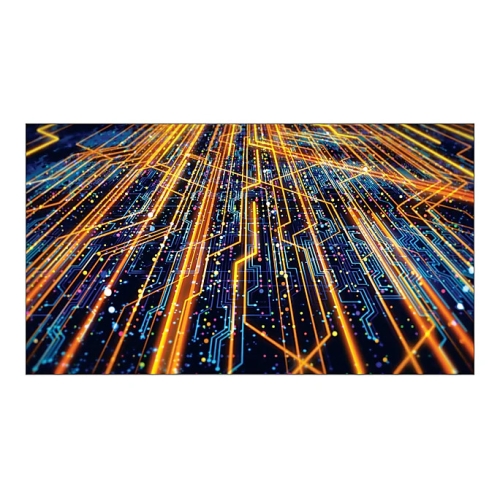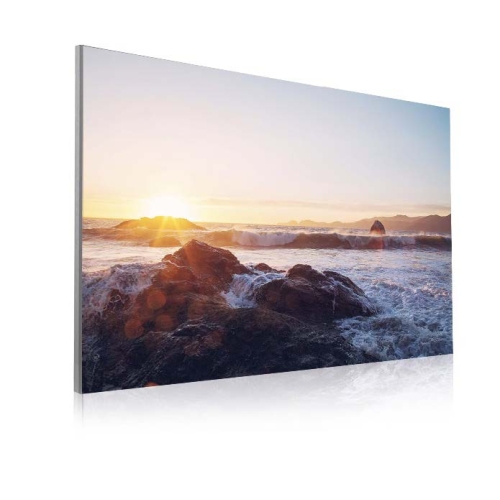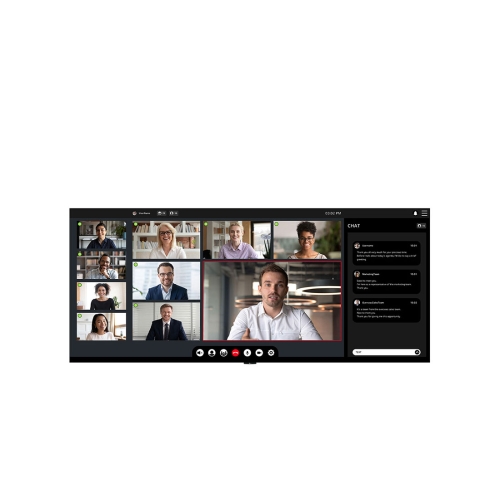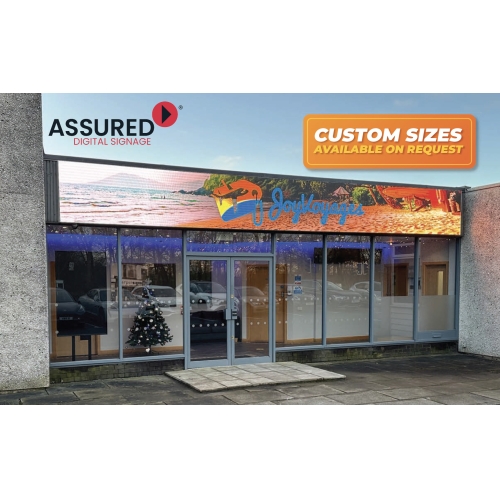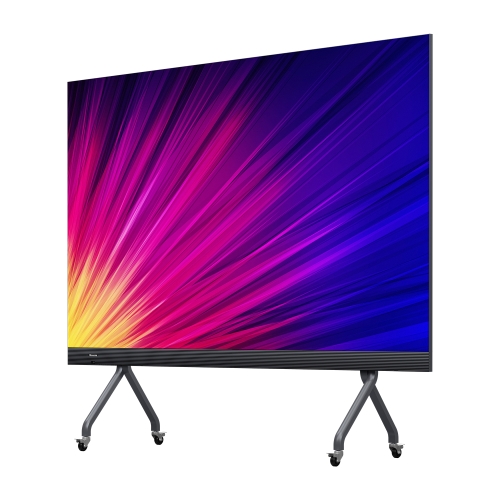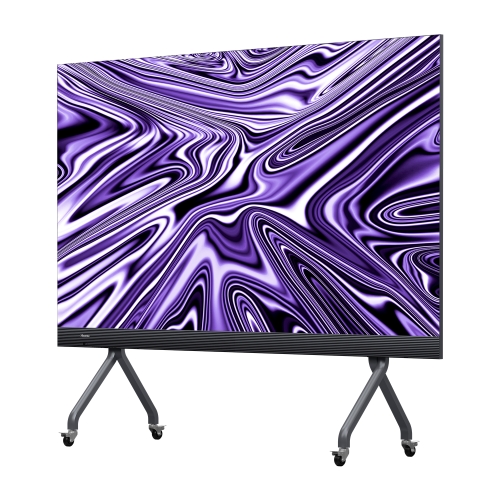What is an All in One LED Display?
All in One LED displays mark a substantial advancement in the launch of new product types within digital signage and visual technology, not least because one day in the not too distant future, the will replace they LCD LED backlit screens currently the mainstay of the domestic TV market.
Current suppliers of LED systems are used to having to bring a number of elements together in order to deliver a successful project. An example such as digital out of home (DOOH) advertising billboards or a large Control Room Video Wall, the specialist AV supplier or systems integrator selects the most appropriate LED cabinet for the task, carefully considering the optimal pixel pitch. This typically involves balancing the project’s budget with the need for clear visibility from the closest potential viewing distance by the audience. In addition to the LED cabinet it would be necessary to specific a host of ancillary equipment such as a video wall controller and receiver, a media player and some method of being able to install everything and achieving this necessitates a certain degree of expertise. In contrast, an All In One system encompasses all the necessary components within a single unit for seamless operation. This typically encompasses LED panel display system with image stitching, a power supply system and a control system along with a mount or stand.
1. Display System
The screen, a key feature of the all-in-one LED display, mesmerises audiences with its breathtaking visuals. These cutting-edge devices enhance the viewing experience to levels unattainable by earlier versions of large displays. The all-in-one LED displays embrace a modular design that, much like other video wall systems, relies on an image stitching system to calibrate and synchronise each panel seamlessly. Currently capable of expanding up to 216 inches, and even further when two displays are combined, they represent a new and innovative way to present information in spaces where installing a permanent video wall is impractical.
LED technology not only offers a broader colour gamut compared to other large display types, but it also delivers colours that are sharper and more lifelike. Moreover, the fine pixel pitch and brightness of LEDs enhance viewing angles and overall visibility. Overall, this makes the All In One an unparalleled new medium for communication.
2. Power Supply System
The second major component of all-in-one LED displays is its integrated power supply system. It might not feel like much of an improvement, however it represents a significant advancement towards more convenient everyday usage, and here’s why.
LED displays depend on a dependable power supply for efficient power conversion and load regulation. The power supply system works by converting alternating current (AC) from electrical outlets into direct current (DC), ensuring the consistent voltage delivery essential for these devices.
Choosing a power supply for an LED display manually requires understanding the specific voltage and wattage needs, familiarity with key features, and knowledge of correct and safe installation practices. However, with an integrated power supply in an all-in-one LED display, these concerns are eliminated. Such displays come with built-in supply systems, negating the need for additional wiring, chargers, or external systems, thus simplifying repairs and replacements.
3. Control System
The control system is the brain of the All-in-One LED display. It gathers all the operating functions and commands in a single hub anchored to the screen (some advanced models offer a detachable system box for a slicker design). It usually runs on a proprietary OS or customed Android version for more seamless operations in a familiar graphical user interface or GUI.
On top of the GUI, ports to connect external devices (such as computers, sound systems, external storage) and Wi-Fi input, the control system can also boast an HD Base T receiver for easier AV management in big venues like amphitheaters or banquet halls. This last feature also allows the combination of two displays without any external arrangements.
Like other components, the novelty of the All-in-One display control system lies in its complete integration within the device. Having a central hub that can control the whole device instead of a myriad of individual peripherals results in simpler installation and maintenance for installers, and seamless operation for the end user.
What are the key features of an 'All In One' LED display?
- It offers a solution that is ‘out of the box’, simplifying the procurement and installation process by providing the end user with a comprehensive package that includes everything needed, eliminating the complexity of separate purchases.
- Large LCD screens, particularly those exceeding 65 inches, are inherently difficult to transport meaning that they can often incur damage and typically require installation by more than one person. In contrast, the modular design of much smaller panel components mean that an All In One display is typically delivered more successfully, without damage and can be installed by one person.
- The expansive 171″ LG screens, featuring a 21:9 aspect ratio, offer versatile content zoning capabilities. This allows for a standard 16:9 area dedicated to mainstream programming, while allocating additional sections for digital signage, advertising, or social media streaming, enhancing both functionality and engagement.
What are the audience benefits of an 'All In One' LED display?
- Enhanced Viewing Experience: The seamless integration of components in an ‘All In One’ LED display ensures a superior viewing experience with vibrant colours, deeper blacks, and high brightness levels.
- Simplified Installation and Setup: Due to the all-inclusive nature of the display system, users benefit from a straightforward installation process without the need for multiple technicians or complex setup procedures, reducing the overall time and cost involved.
- Versatility in Content Display: These displays allow for flexible zoning of content, enabling users to showcase a variety of media simultaneously, from traditional television broadcasts to dynamic digital advertising, making it a versatile tool for diverse applications.
Why have All In One displays now emerged onto the market?
The widespread adoption of MicroLED technologies has enabled the development of extremely fine pixel pitch resolutions, now reaching as small as 0.9mm, though this currently comes with a significant price tag. Such fine resolutions has meant that viewing from close range is now comparable to LCD and so this is now suitable for a wider range of applications such as the domestic TV market.
Manufacturers are currently utilising two types of MicroLED technology, Chip on Glass (CoG) and Chip on Board (CoB). However, suppliers have not yet perfected the mass transfer process, which results in the higher cost.
With increasing sales potential, vendors are now looking to differentiate their offerings and add unique value to end customers. An example is the Samsung MicroLED Consumer TV which was shown to a selected audience at ISE 2024.
Conclusion.
The advancements in MicroLED technology have catalysed a revolution in the display industry, giving rise to ‘All In One’ LED displays. These cutting-edge systems not only simplify the complexities of installation and content management for both public venues and private spaces but also enhance the visual consumption of content through superior colour fidelity and versatile content zoning capabilities.
With the ongoing refinement of production techniques and the push for more economical MicroLED solutions, the proliferation of ‘All In One’ displays is poised to redefine the narrative, merging the realms of advertising, information, and entertainment into a seamless digital tapestry. This shift underscores a future filled with boundless opportunities for interactive and immersive content, heralding a new dawn in digital signage.
